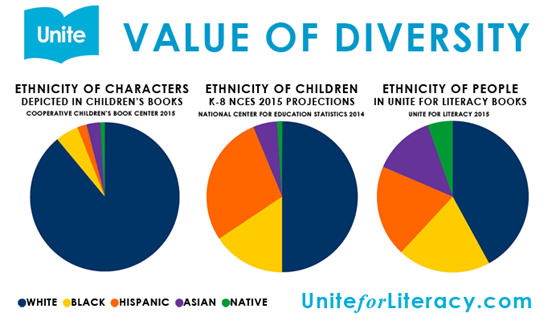Diversity is Valuable and Relevant
By Mark W.F. Condon, Unite for Literacy vice president
Recognizing our differences from one another is a first step in understanding, and hopefully accepting, those unlike ourselves. That’s one reason enlightened parents and educators are so intent upon ensuring children have abundant interactions with and information about individuals, communities and families different from their own.
The value of getting to know those from other backgrounds can support the ability to explore cultural perspectives not found in our own homes and to appreciate others’ diverse points of view, reducing the potential for defensiveness or aggression.
So, how can parents and teachers address diversity as early as possible for young children?
One way is through books that offer diverse and culturally relevant content. Children need to see themselves, their families, their communities and others in the books they read. And diverse books, when read and talked about at home, can offer scenarios and information that can be dealt with in ways that parents and children find comfortable.
Online libraries, like Unite for Literacy’s online collection of books for new readers and the International Children’s Digital Library for older children, offer on-demand, free books brimming with cultural, linguistic, racial and gender diversity. Local libraries offer diverse books, too. And all of these ways to access books are available to children, regardless of whether they live in book gardens or book deserts.
Books can lead our children to embrace and enjoy the wonderful array of powerful diversities in this world. They also add value by providing opportunities for important discussions, like those about diversity.
Another way that children can learn about the wonderful variety of people is through culturally diverse play groups and classrooms where parents and educators take the time to encourage questions and address confusions about diverse playmates and classmates. They can offer a pathway to appreciating differences, eliminating the common expectation of conformity and homogeneity in one’s peers.
When experiences of diversity are accompanied by support from adults who encourage delaying judgment and turning to engagement, children grow. Rather than jumping to the assumed safety of rejection and othering, children can learn to accept individual differences without assigning generalizations to any specific group of people. With sufficient opportunity to express their confusion, and to reflect upon and express a more welcoming response to others, children can come to appreciate diversity without adopting or rejecting the lifestyles of others.
